Huplaso Grows: Natural Mineralizer from New Brunswick Quarry Making Inroads Across Canada, World
(Updated May 7, 2023)
The Huplaso quarry in Bathurst, New Brunswick, contains a rock that is rich in more than 57 minerals (macro, micro and trace elements) and is ideal for soil remineralization and organic plant growth.
“It increases about 27% the health of the plant,” said Stéphane Losier, business development director. He added that the product, made from ultramafic basalt-type volcanic rock dust, improves yields by more than 35%, balances pH and increases soil paramagnetism levels.
According to Jean-Paul Dubé, Huplaso’s North American sales manager, paramagnetism produces a potentially beneficial alignment of soil elements. “For example, when a plant dies it produces nitrogen. Usually, it just trickles down and goes away. When the basalt is in the ground, the element of nitrogen will attach itself to [the] elements [in our product]. And so, it makes for a richer soil.”
This helps a variety of plants in a variety of ways. “We have also measured around 235% bigger tomatoes in terms of biomass,” Losier explained. When it comes to potato plants, “in terms of the production of the plant, also, it will produce more branches, more leaves and more potatoes.”
The benefits of natural volcanic rock
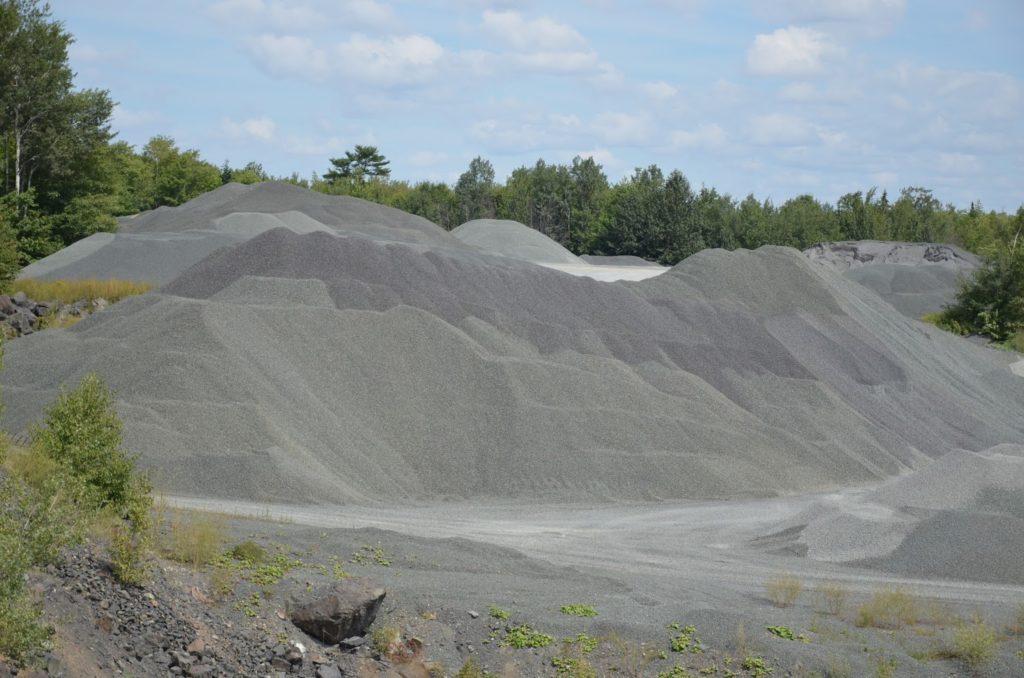
The Huplaso source rock, which is a volcanic material formed around 460 million years ago, is particularly rich in the macro nutrients calcium, magnesium, potassium and phosphorus and micronutrients such as iron, manganese, zinc, copper and boron. The concentration of some key nutrient elements in Huplaso are shown in the table below. The complete chemical analyses of Huplaso showing all 57 mineral elements is available on the company website.
As the table shows, Huplaso is also loaded with silicon, which has been shown to play a significant role in mitigating environmental stresses on plants. In fact, a 2022 review article in the journal Plants shows that silicon is the only mineral element that can effectively mitigate the effects of abiotic stresses such as soil salinity, drought, flooding, metal toxicity, mineral deficiency, and extreme temperature fluctuations. The article also shows that silicon significantly reduces the biotic stresses such as plant diseases, insect infestations, and leaf-chewing pests. This makes nature-based, silicon-rich soil amendments such as Huplaso ideal for organic farming and regenerative agriculture because the high silicon levels act as a natural pesticide and fungicide, thus eliminating the need for toxic and environmentally damaging chemical sprays.
| Mineral Element | Milligrams per kilogram Huplaso |
| Silicon | 177000 |
| Calcium | 108000 |
| Iron | 70800 |
| Magnesium | 25400 |
| Potassium | 11000 |
| Phosphorus | 1800 |
| Manganese | 1740 |
| Zinc | 100 |
| Copper | 60 |
| Boron | 12 |
As stated in a Huplaso facebook post “When using volcanic rock dust (vs. pesticide), the insects are deterred, rather than decimated. The area’s ecological milieu stays balanced. It’s practical for sustainable farming.”
The Huplaso brand

In 2017, the Huplaso brand grew from St-Isidore Asphalte Ltée — an Atlantic Canada road-construction company with around 12 quarries in total, but one in particular with special properties making it ideal for soil remineralization.
“The basalt rock dust that we have is really particular because we have a low percentage of silica dioxide, at 37%” he said, adding, “We have a lot of calcium. We’re more than 24% calcium here. It’s pretty rare, from the research we did, in North America. We didn’t find any other quarry quite like ours. Normally, all silicates are pretty high. When the silicate is low enough, the plant is able to use it. That makes a lot of difference in the structure of the plant itself.”
Currently, the company sells products mostly within Canada regionally and into the northern United States, with a growing customer base in Thailand, Africa and South America. The majority of business is directly with farmers, noted Dubé. However, Huplaso sells its products in smaller amounts at retail stores and garden centers for gardeners, landscapers, et cetera.
“We see a change where [conventional gardeners] are starting to add our product with the chemicals [fertilizers]. Sometimes, they’ll use the chemicals, adding our product,” he said, adding that people in North America fortunately are starting to “wake up” to the possibilities of soil remineralization as not only an effective way of improving plant production, but also for combating climate change. “Some are trying to make the change from conventional to organic.”
Proven results
The company hired a University of Moncton research institute to conduct a three-year experiment with local farmers to confirm the basalt rock’s quality prior to selling the product. Dr. Marion Tétégan Simon, Scientific Director of the Peatlands, Soils and Sustainable Development at the Coastal Zones Research Institute, said, “When we started our work on Huplaso’s rock powder, we compared it to other products existing in the market. What we saw was that the performance on the yield was very interesting with Huplaso.”
For the trials, Dr. Simon used Huplaso’s product for tomatoes, radishes and potatoes. The experiments were performed in a greenhouse so that key growing variables such as temperature (25oC), humidity (50%), soil pH (5.5 to 6.5) and water availability could be carefully monitored and controlled. A naturally nutrient-poor topsoil that had not been previously fertilized was chosen as the growing medium. Four amendment application rates were used: zero (for the control pots), 1, 2 and 3 kilograms Huplaso per square meter of soil (corresponding to 4.5, 8.9 and 13.4 tons per acre). Several parameters were observed weekly during plant growth: plant height, plant weight at harvest, number of leaves, leaf chlorophyll, and harvest abundance.
As graphs of results shown below indicate, all three experiments showed significant increases in plant health and yield in the Huplaso treated pots versus untreated pots or those fertilized with other products. More information on these tests is available on the research page of the Huplaso website.
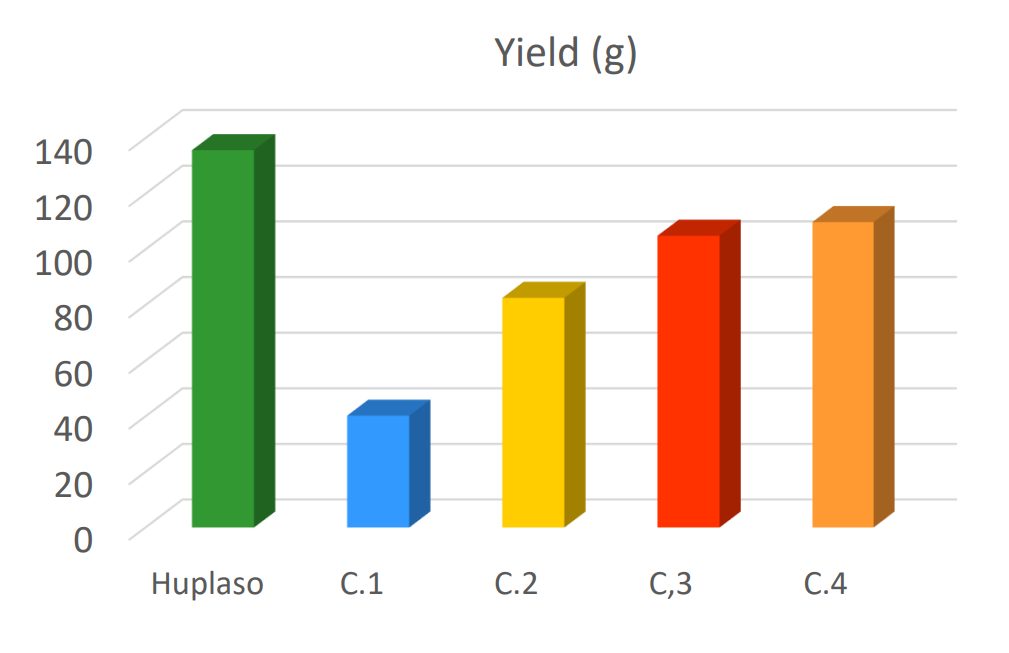
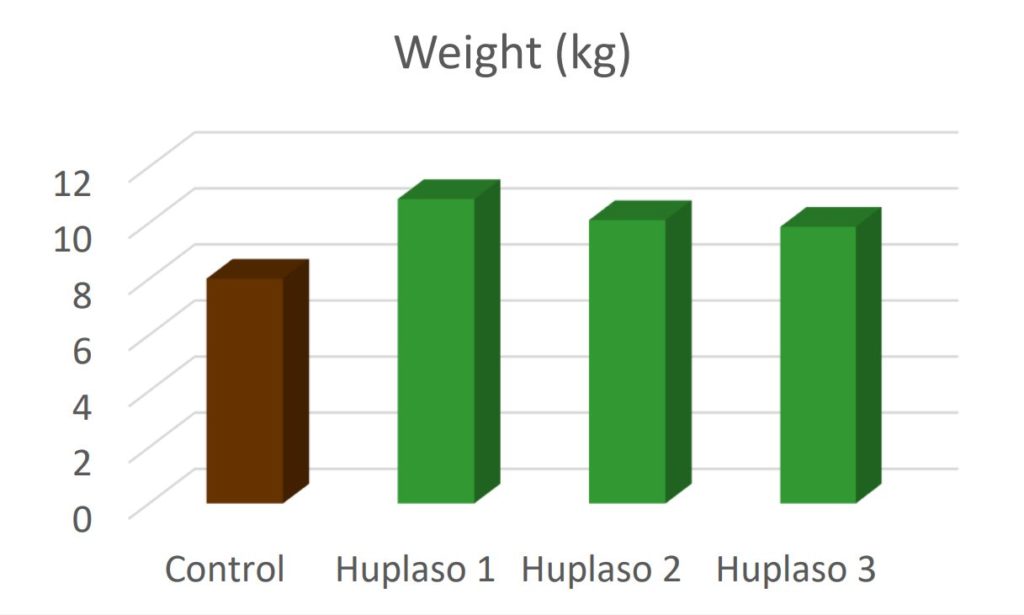
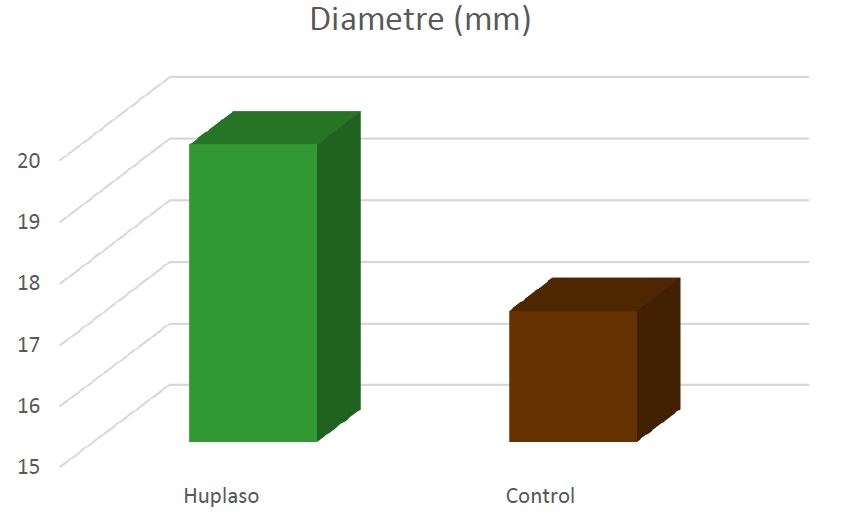
Impressively, the overall test results showed a doubling of weight for the radishes and potatoes when grown in soils treated with Huplaso. As for the tomatoes, the product produced fruits with around five times the weight versus the control.
The cost for Huplaso’s rock-dust application is worth it not only for niche farmers producing higher-value luxury agricultural products, Dubé said, but also for the more ‘regular’ types of farms found in New Brunswick. Simply put, an application of Huplaso rock dust will last for many growing seasons.
“If your end product is high end — if you do wine or cannabis for example— then you don’t mind spending around [C$500] per ton. Those guys don’t mind spending that money, because they’re [already] adding products that’ll cost them $2,000 to $3,000 for an acre. But when you deal with grain and potatoes, it might feel expensive.”
However, he added: “We did tests with other farmers at different lower levels of basalt and now know that about 1,000 kilos per acre is good if you have a decent soil. This is a good point: since our product is insoluble, it stays in the ground for up to 9-10 years. It’s an added value for them.”
Results from working farms
The effectiveness of Huplaso for improving soil quality and plant health has also been demonstrated on working farms. For example, at the Winchelsea and Against the Grain Farms in Ontario, Canada, Husplaso (Fast Release) and black carbon were applied directly to planting trenches along with dried bean seed. The Husplaso amended rows showed improved root formation, seed production, crop yield, drought resistance, and early frost tolerance relative to bean plants grown in unamended soils. These and other trials demonstrate the significant long-term soil and plant health benefits that Huplaso can provide, especially when mixed with other organic materials.
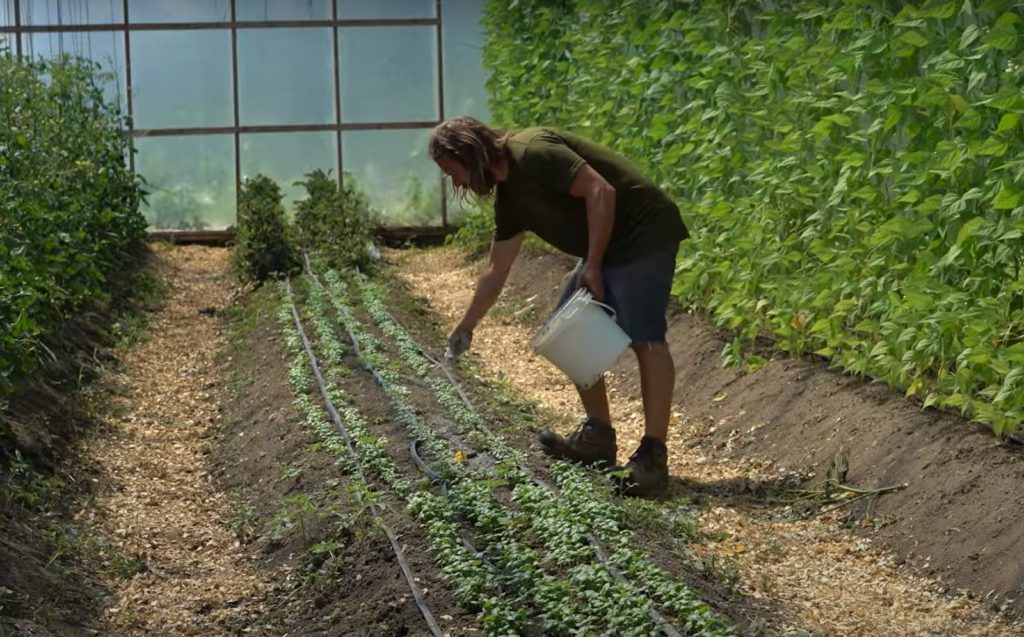
Huplaso has also been tested by Kenneth Robichaund of Gourmet Chef Packers, an organic strawberry farmer in New Brunswick. Robichaund has now been using Huplaso for several years and reports that his initially unproductive virgin soils became fertile and productive within the first growing season with the use of Huplaso and other organic products. In a video interview with Huplaso, Robichaund explains how Huplaso helped his berries become more resistant to drought and frost and imparted a strong leaf texture and stem structure that made his plants more resistant to wind damage, relative to strawberry plants grown without Huplaso.
Jeanne-D’arc Lavoie, president of the Gardeners Groups of the Acadian Peninsula, has also seen great results using Huplaso on her vegetables and fruits. She notes that there may be a lag time between Huplaso application and noticeable improvement because it takes time for the additional minerals to be ingested by beneficial microorganisms such as mycorrhizal fungi. These microbes are largely responsible for supplying plant roots with the nutrients they absorb from the soil. It takes time for microbes to break down rock particles and ingest the newly applied minerals. But after a few months, Jeanne noticed that her Huplaso-treated tomato plants were producing considerably more fruit than usual. Huplaso-treated cabbages, leeks, turnips, peppers, and onions similarly showed signs of improved health and size. The carrot plants she had applied Huplaso to were not attacked by carrot flies, while adjacent untreated carrot plants were infested. While these are not scientific studies, the results speak for themselves.
Aldeoda Losier, a regular competitor at the Provincial Giant Pumpkin Festival, offers more evidence for the effectiveness of Huplaso. Aldeoda is quoted on the Huplaso website:
“I have been using the Huplaso product for competitions since 2016, which allows me to have pumpkins over 1,000 pounds. Since 2017, I have gained two 2nd positions. I also managed, despite the drought, to take first place this year with a 1,058 pound pumpkin. Despite being smaller than my competition, my pumpkin was 20% heavier. I believe part of my victory is due to Huplaso and the other natural products I use. My pumpkin contains more nutrients than those of my competitors, which use chemicals. When compared to others, it is heavier, fuller and contains no cracks. One thing is certain, I will continue to use Huplaso. It is one of my powerful weapons for victory.”
In addition to improving soil quality, plant health and crop yield Huplaso has another major advantage. It can significantly reduce or even completely replace the need for synthetic chemical fertilizers on farm and garden plots. Long-term use of synthetic fertilizers degrade soils through acidification and harm surrounding ecosystems through excess nitrogen and phosphorus in field runoff. Huplaso, being an organically certified natural soil mineralizer and restorative, can play a key role in moving growers away from unsustainable practices to a regenerative agricultural approach.
What’s in a name?
The name ‘Huplaso’ is a portmanteau, combining ‘humanity’, ‘plant’ and ‘soil’ into one word. The moniker means that the company is forming a union between these three elements, said Losier. “To have a healthy humanity, you need to feed the soil properly. And so, we add the cocktail to the soil — all the minerals that the plant needs.”
With the right nutrients in the soil, which Huplaso provides, plants will be healthier and better capable of defending themselves, while producing products for the farmers, he added. This helps reduce dependency on conventional fertilizers, as well as pesticides and herbicides.
“The people who eat the plants or fruit of the plants will have all these minerals inside them to be healthier, also. Everything starts from the soil. That’s why we created that name, and that’s our vision and our objective.”
New products, markets
Since the company’s inception, customers have been using Huplaso’s powder for their lawns, said Dupé, which has led to them demanding a granular, cleaner product for such applications. “And so in late 2021, we did make a granular product that we call ‘Lawn Remineralizer’. It sells really well because there aren’t a lot of options if you want to put an organic product on your lawn.”
The company is expanding into new markets not only worldwide, but also domestically, with a distributor now in Calgary to help sell rock dust within Western Canada, he added. The U.S. also remains a key market for Huplaso. “Since we’re close to Maine, we have products in Maine right now. I’m looking for distributors in the States. We’ll ship directly to anywhere in the States if people want us to, and usually we pay part of the shipment as well.”
Recently, Huplaso began collaborating with Remineralize the Earth, which Dubé suggested is an excellent relationship for getting out the message that improving soil health will help sequester more atmospheric carbon dioxide.
Huplaso will also be at Cultivate’23, July 15-18, 2023, at the Greater Columbus Convention Center in Columbus, Ohio, Dupé noted. The event, presented by AmericanHort, brings together many representatives of the green industry, and Huplaso will have a booth there for any potential U.S. clients wanting to discuss the company and its products.
Carter Haydu Carter Haydu is a senior content creator for King Abdullah University of Science and Technology (KAUST) in Saudi Arabia. Since 2012, he also has written about the Canadian energy sector for a Calgary-based trade publication. Carter has been a journalist since 2005, with much of his reporting delving into the environmental issues facing upstream oil and gas. He has written for Remineralize the Earth since 2018.
James Jerden is an environmental scientist and science writer focused on researching and promoting sustainable solutions to urgent environmental problems. He holds a Ph.D. in geochemistry from Virginia Tech and a Master’s degree in geology from Boston College. Over the past 20 years, James has worked as a research geochemist and science educator. He joined Remineralize the Earth because of their effective advocacy, research, and partnership projects that support sustainable solutions to urgent environmental issues such as soil degradation (food security), water pollution from chemical fertilizers (water security), deforestation, and climate change. As a science writer for RTE, his goal is to bring the science and promise of soil remineralization to a broad, non-technical audience. When not writing, he can be found at his drum set.
Support us on Patreon
Thank you for joining us today! Please become a member of RTE and support us on Patreon. Unlike many larger organizations, we work with a team of determined and passionate volunteers to get our message out. We aim to continue to increase the awareness of remineralization to initiate projects across the globe that remineralize soils, grow nutrient dense food, regenerate our forests’ and stabilize the climate – with your help! If you can, please support us on a monthly basis from just $2, rest assured that you are making a big impact every single month in support of our mission. Thank you!

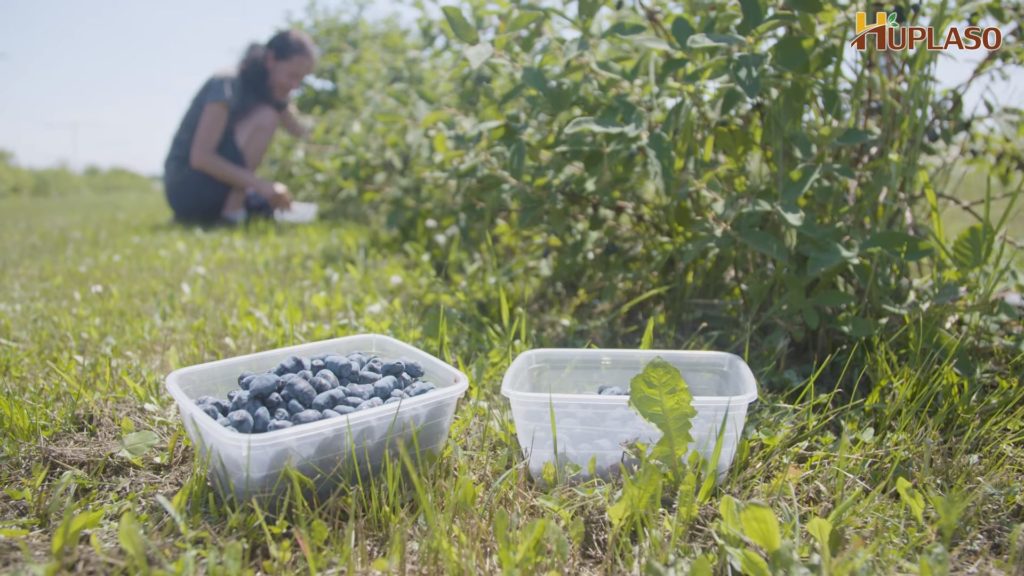

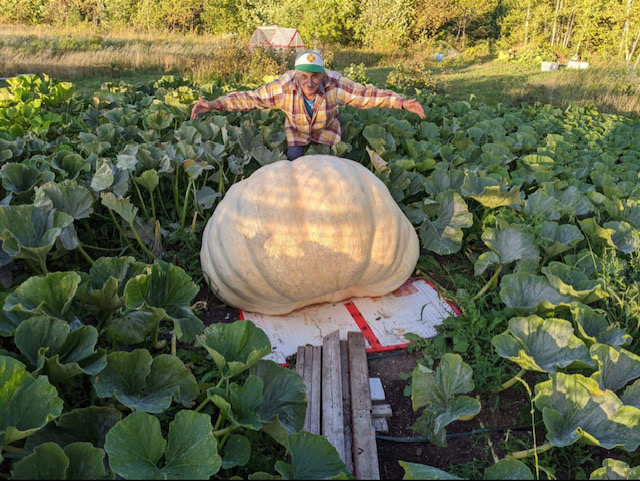
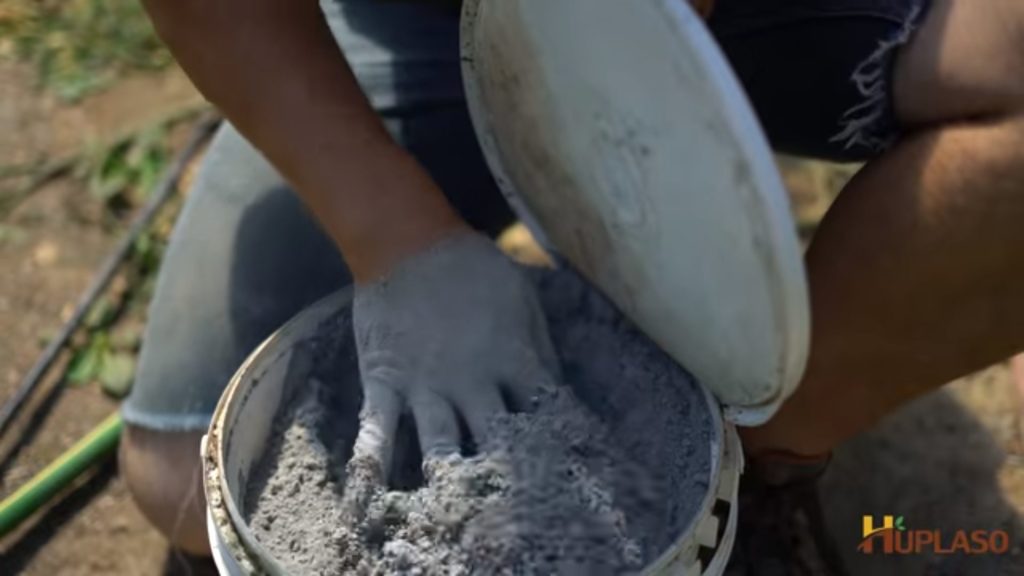
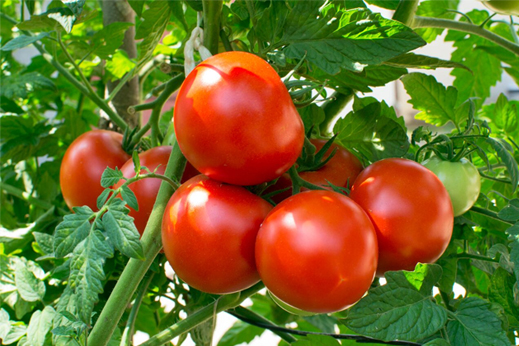






Barbara Read
May 4, 2024 (3:38 pm)
Wanting to find a place that I can buy your volcanic rock, or maybe a place in Moncton.
Joanna Campe
May 6, 2024 (3:09 pm)
The best way to find out more is to contact Huplaso directly. Their email is info@huplaso.ca, their website is http://www.huplaso.ca and their phone number is 1-833-487-5276. We will also pass your email address along to them.